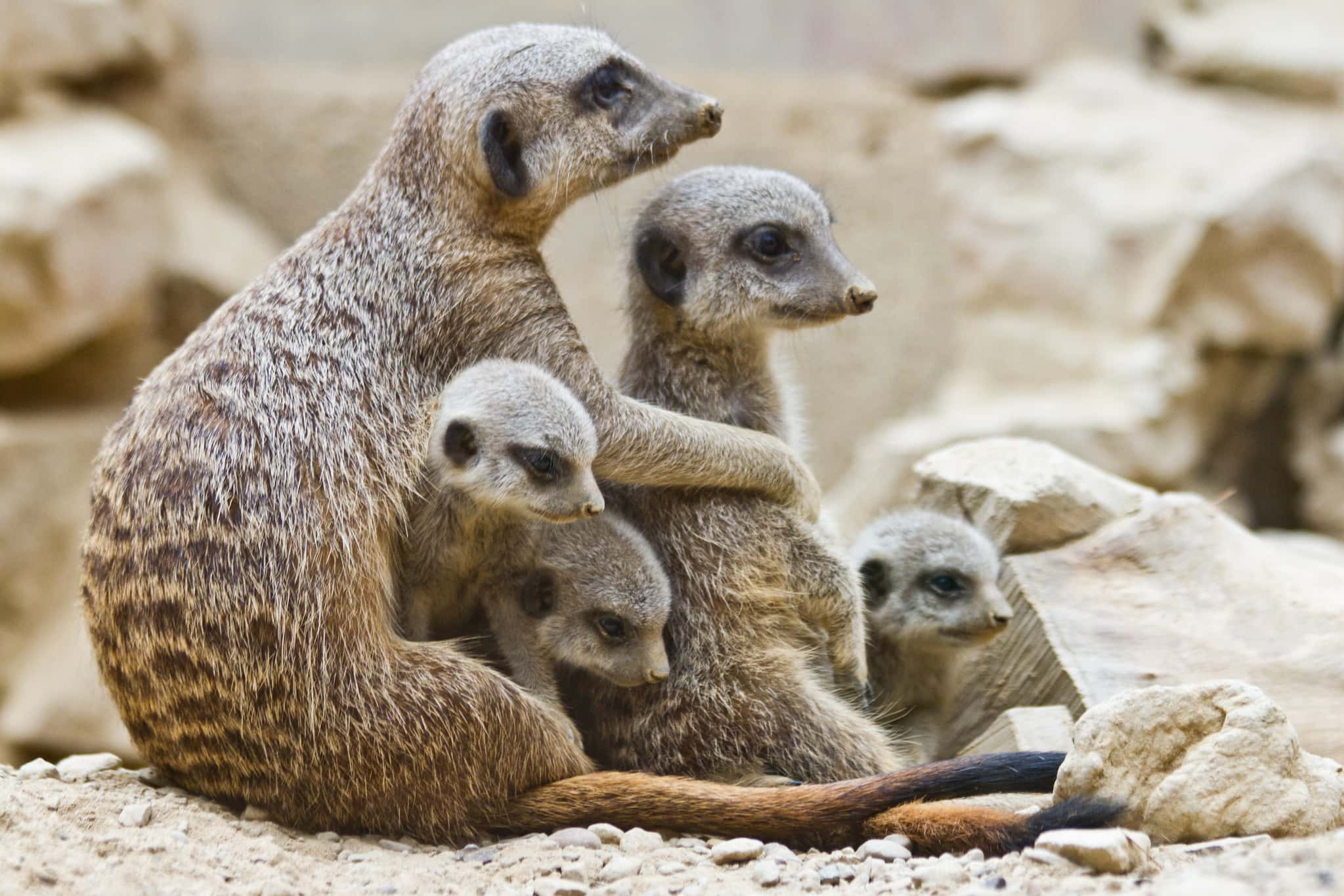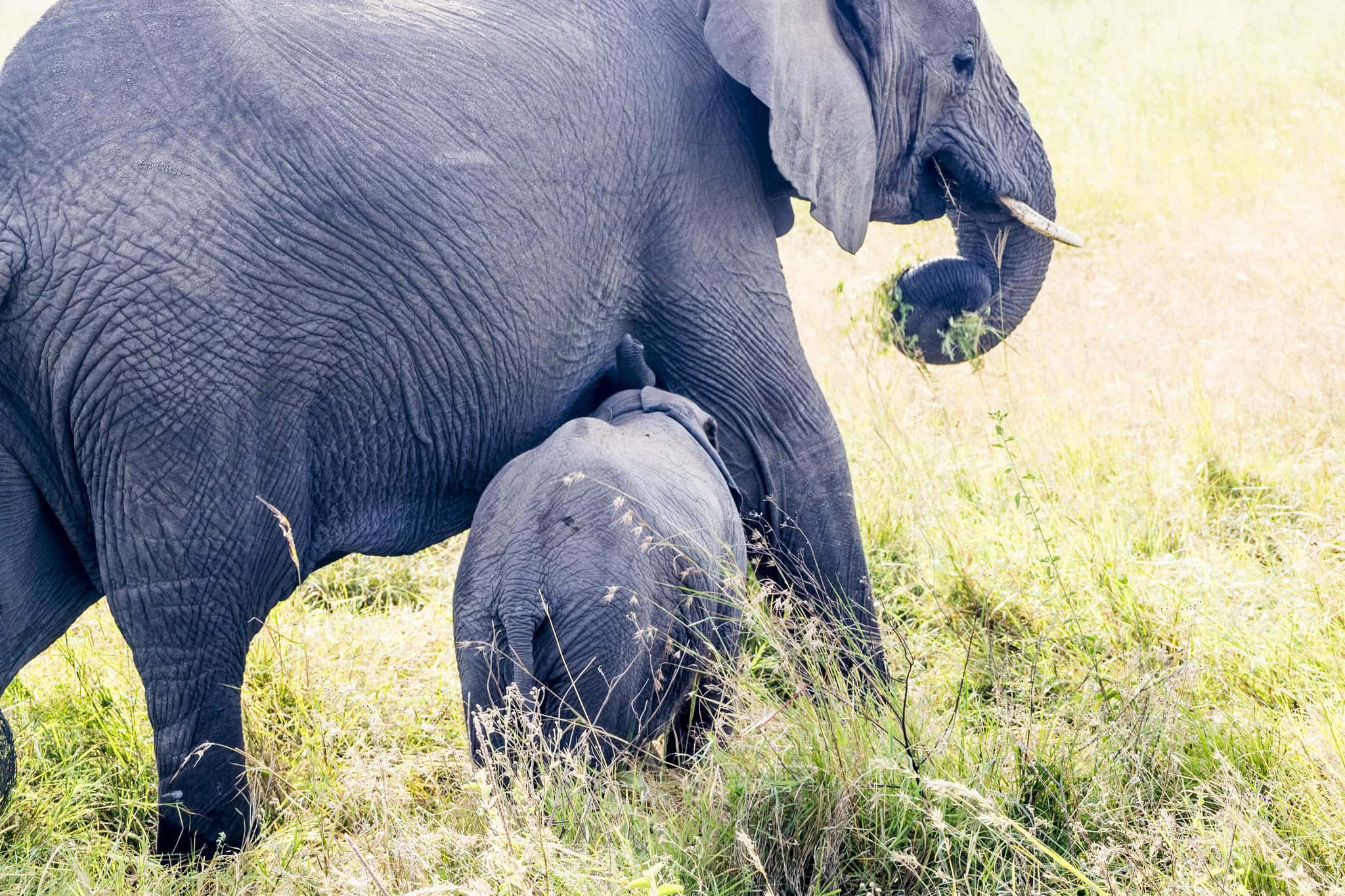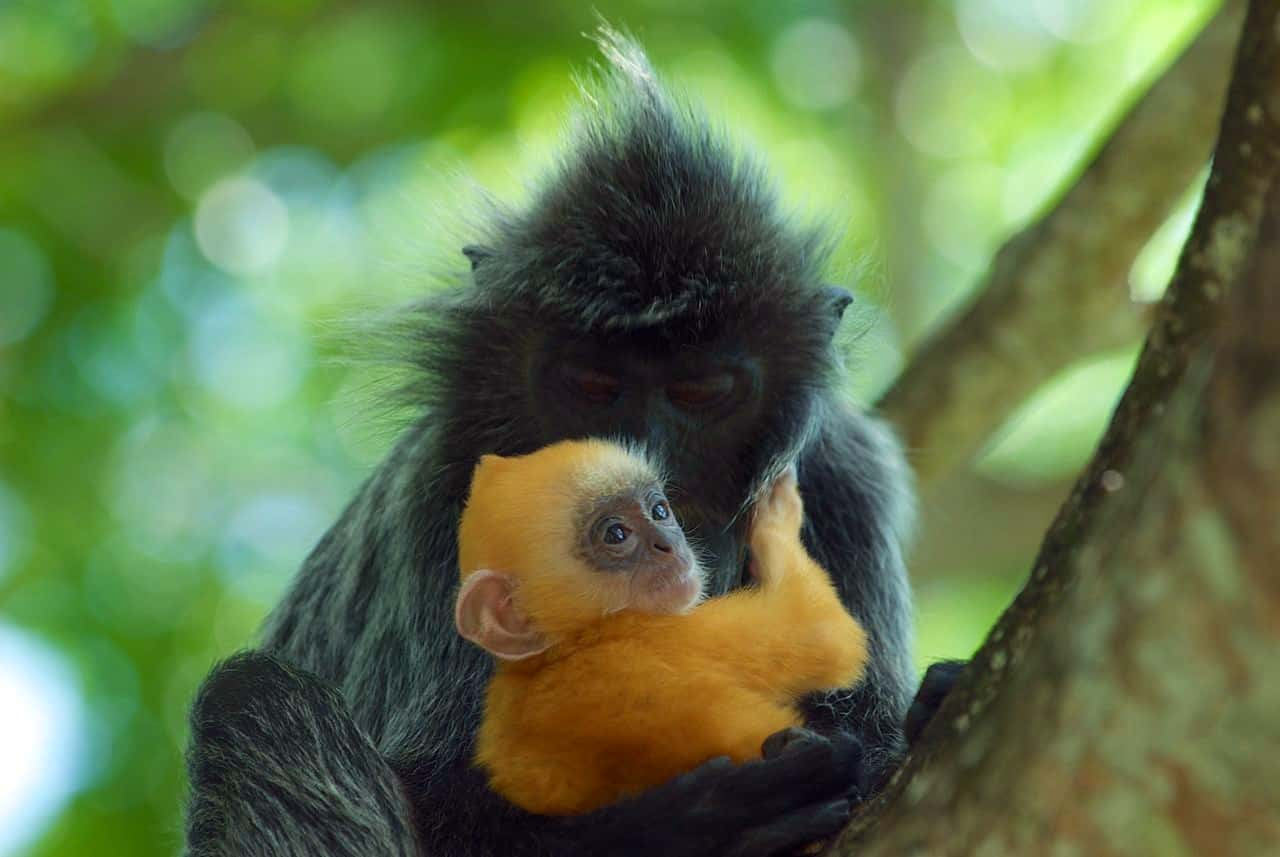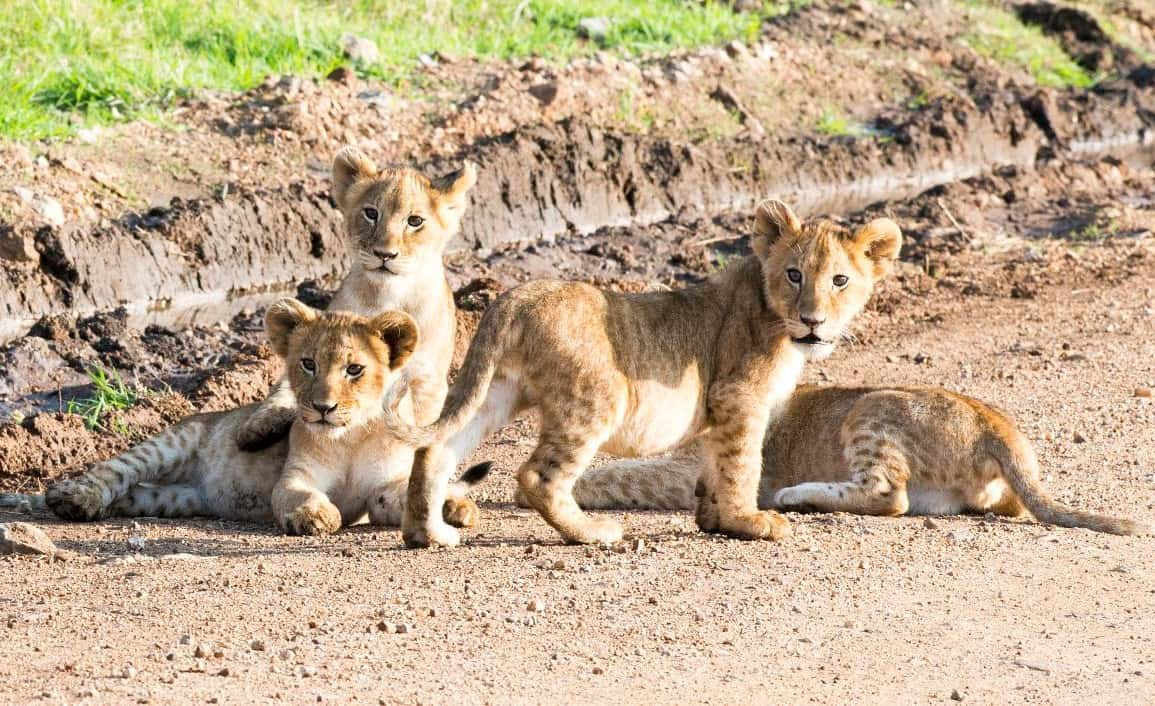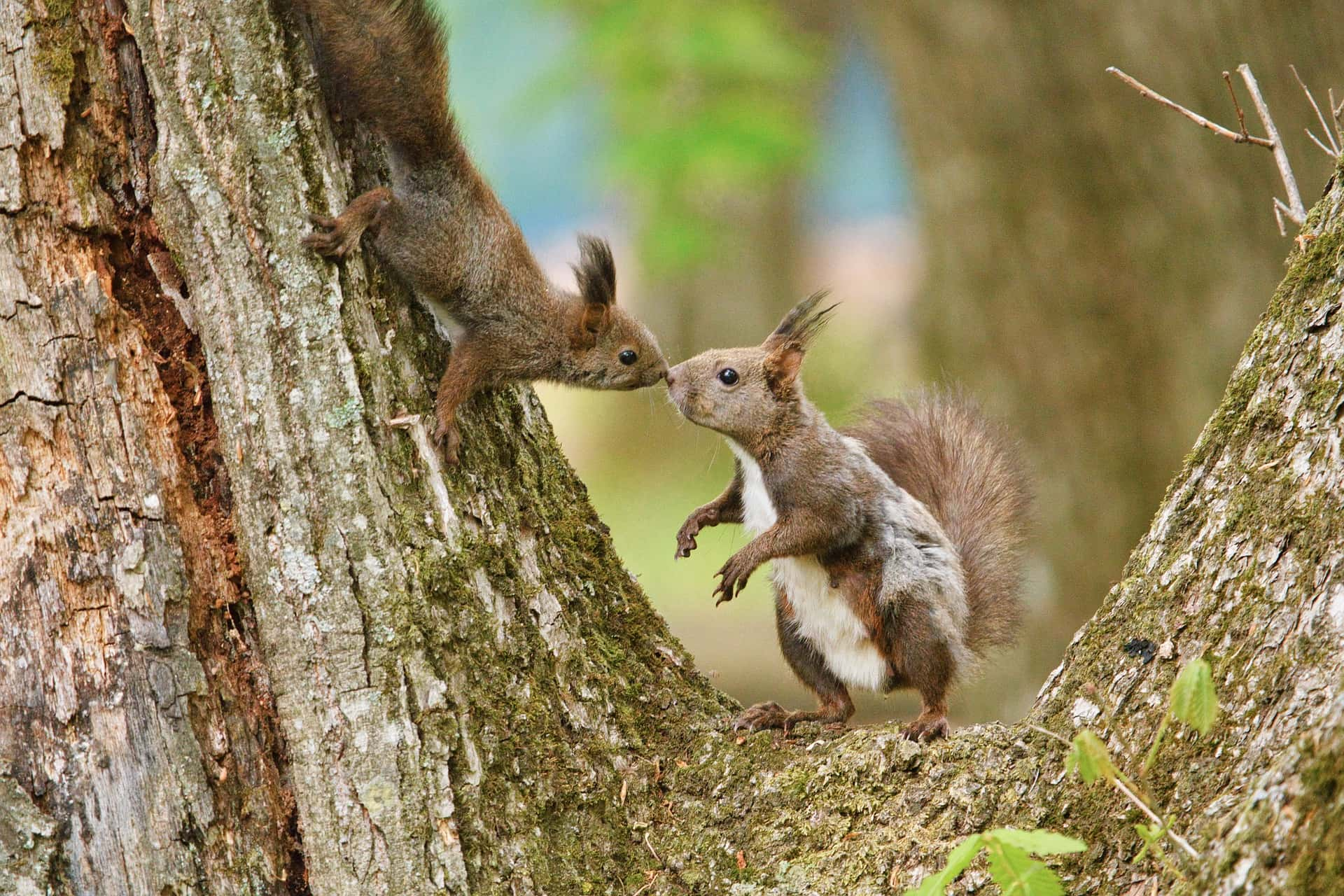What is more adorable than baby animals?
It’s okay, you can take a second to think.
Baby humans? Sorry, no. Putting your dog in a funny costume? Getting there, but still a ways off. An elderly couple walking down the street holding hands? Close, but no cigar. It turns out there is actually nothing more adorable than baby animals. Yup, that’s right, NOTHING! And we consider ourselves authorities on this matter. This is part of why the internet exists: to brighten up your day with the miniature versions of full-grown beasties.
So, if the world has been getting you down a bit (or even if it hasn't) let’s take a break from all the chaos and learn some charming facts about our favorite subject in the world: baby animals.
40. Parrot Names
Baby parrots are all essentially given names at birth. After giving birth, a parrot will develop a particular call for its offspring, who will then adopt the same call, with some slight variation to make it its own.
Additionally, parrots experience a phenomenon common to most species of birds called "imprinting", whereby new-born parrots latch on to the first moving/living thing they lay eyes on, and accept it as their parent. Most often, of course, this is their mom or dad... but if a parrot opens its eyes to see a human being, they'll often assume the person is their family.
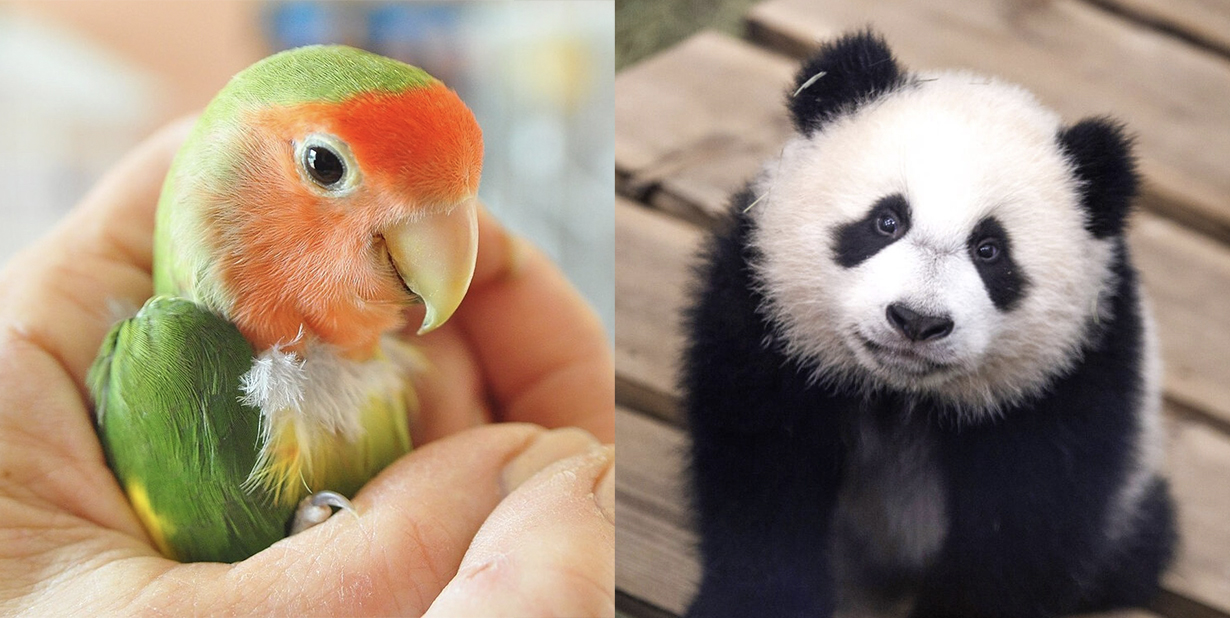
39. Alpha Betta Momma
Before they are even born, Siamese fighting fish need all the help they can get. For whatever reason, female fighting fish have an innate hankering for the taste of their own eggs (caviar anyone?), meaning that in almost every instance, the Siamese father must step in and fight their right to live a life aquatic.
Ok so that one was... maybe not so cute. But stick with us! It gets better from here on out.
 Getty Images
Getty Images
38. Consider us Lucky
97% of the animal kingdom does not experience the privilege of a childhood under the care of both mom and dad. For the vast majority of creatures on Earth, the responsibilities of parenthood fall primarily on one gender.
However, puffin babies are just like us in this regard: they almost invariably get the full benefits of two parents growing up.
Puffins are monogamous maters and after childbirth—the male will usually stick around to raise the child in tandem with the mother.
37. Lizard Lunch
Basically no-one on Earth spends enough time being thankful that they weren't born a Long-Tailed Skink Lizard. Heck, many of us don't even think about it at all. But, if you happen to have a spare 5 minutes right now, it might be worth saying a quick thanks to the universe for making you a person. It might not be all fun-and-games in a typical human life... but at the very least, most of us avoid being eaten by our moms.
See, unlike most lizards, skink moms do hang around long enough to ensure their babies grow up, if not happy, at the very least healthy and strong. So far, so good right? Well... not so much. When the going gets tough, the skink mom has basically only one trick up her sleeve: if their nest is threatened before the babies grow to maturity, they will waste no time in devouring children, presumably with the idea that consuming the extra calories will give them enough energy to make a successful escape.
Imagine if every time your mom got scared, she gave serious thought to eating you. Welcome to the wonderful world of the Skink.
36. Cotton-Top Cooperative
If born as a baby cotton-top tamarin, the chances are that you are one of a pair of twins, as these monkeys have twins babies more often than single babies. After being born, babies are raised cooperatively by the entire group.
35. It’s Not a Contest—Except for When It Is
Male pipefish are held solely responsible for the carrying and birthing of their offspring. However, they don’t receive female eggs from just one other pipefish, but many others as well. The babies that end up being born are those from the more attractive female. The male selects which embryos to nourish based on how attracted they were to their mother.
Love is a cruel game for the lady pipefish.
34. Helplessly Adorable
A giant panda isn’t so giant when it is a baby—it’s actually about the size of a stick of butter. They are also completely hairless and vulnerable, making them, somehow, even cuter.
33. Baby Horns
Fully-grown rhinos are a confusing animal to behold, if only because they sit directly on the line between being adorable and fascinating... while they're simultaneously entirely capable of squishing you like a fly. If any animal is worthy of the description, "basically an actual tank", it's these guys.
Which may be why it's so surprising that baby rhinos aren't actually born with a horn. Instead, it takes the calves about five months for their horn to begin emerging from their snout. And in the meantime, they look like the most adorable, fat, and wrinkly little ponies that nature ever accidentally created.
32. Practice Makes Elephants
Baby elephants try to grow up fast. They spend their childhood days practicing all their mechanics in order to blossom once they reach adulthood.
Which, in case you're ever interested in losing 5 hours to a life-changing Youtube binge, makes for absolutely adorable videos. A baby elephant in the process of figuring out what their trunk is, makes for one of life's greatest little joys. "Why is there another arm on my face???? Who owns this thing????"
31. Bonobo Bonds
Bonobo babies learn the importance of community and kinship early on in their youth. They form emotional bonds through touch and the relationships they build will last long, throughout their youth into their adult life.
30. No Smell Deer
In order to help their chances of survival (because that’s the name of the game) baby deer do not have a scent.
It's a pretty cool trick of evolution. Given how much of animal hunting is based on smell, most hungry predators would find a fawn to be essentially invisible. That'd be like if human babies were designed to be un-taken-able, by having the ability to camouflage themselves like chameleons.
Once again, we have proof that other animals get all the cool superpowers.
29. Meerkat Kindergarten
The Meerkat social order is intensely co-operative. Seriously: if you're ever looking for a real team-building exercise, you might consider pretending to be Meerkats.
These little guys spend their entire lives working as a unit. And nowhere is this more evident than in the way their babies are raised. Meerkat parents essentially form collective clubs, in which the duties of raising and teaching the young are shared amongst the adults. Young ones are raised together as if they were in a school, as the pups learn all their skills through this upbringing.
28. Gray Flamingo
That beautiful fluorescent pink flow of the flamingo must look incredibly on baby flamingos, right? Nope. When a flamingo is born it a small gray ball of feathers, like a tropical version of the old ugly duckling story.
27. Detained Development
Of all the great apes, orangutan babies take the longest time to mature. It takes up to eight years for a baby orangutan to be weaned from their mothers and truly escape the bonds of childhood.
And never has it been better for our reputation as a species to not be considered a "great ape". We are simply regular apes... which might normally feel like a bit of an insult, but in this case might be for the best. Seeing as our transition out of childhood takes a cool... 10 years longer than these guys? At the best? It's probably good that we're not comparing ourselves directly to them.
26. Milking It
Given the outrageous amount of growing they've got to do, a baby elephant must drink a ton of milk, right? Well, they actually, quite literally, drink over two tons of milk! As a calf, elephants drink as much as 2,200 gallons of milk from their mother.
If you are a lactose-intolerant baby elephant, life is really, really, really unpleasant.
25. Color Doesn’t Matter
Many monkey babies are born a different color than their parents. The langur, for instance, is colored black, but their babies are orange.
Which is why the langur version of the Jerry Springer Show is so famously confusing. "You are... maybe the father? Honestly, we can't tell".
24. Joey Beans
Baby koalas, known as joeys, are particularly fragile babies. They're born blind, deaf, and almost the exact size of a jelly bean (although presumably less delicious).
Once bigger, they will stay with their moms by attaching themselves to her back.
23. Teeth the Shell
Ever wonder how a baby reptile breaks out of their shell in order to actually be born? Many reptiles, including baby crocodiles, have what is called an “egg tooth” that allows them to crack the shell and break free into the world. Two months after hatching, this tooth will be resorbed back into its body.
22. Big Babies
Living for up to as many as 75 years, ostriches are the world’s largest bird. But it doesn’t take them very long to grow up, as baby ostriches hatch larger than chickens and nearly reach full-grown height after only six months.
21. Do You Wanna Build a Snowman?
Macaques are playful animals, but in their youth, they take it to another level. When it snows, they will often roll up snowballs for fun and have a grand old time with them.
20. Chimp Barbies
One way in which baby chimpanzees will get ready for when it is their time to raise their own offspring is by making dolls to play with as if they had babies of their own. They will gather together sticks and rocks to build their dolls and then raise them in reflection to their own parents.
19. Not Rittens?
Don’t get confused—baby rabbits are also called kittens! I mean, even if you were to confuse them, the result is still tiny adorable animal friends. It’s a win-win situation.
18. Limited Resources in Hotel California
Eagles are nothing to mess with, so it shouldn’t be any surprise that neither are their chicks. After hatching, baby eagles will sometimes go to extreme measures in order to get privileged access to the resources their mother provides. "Well that's not so bad," you might be thinking, "after all, what siblings don't squabble a little bit. Fair enough. But eagles do take it a little far. In this case, "extreme measures" means ending and maiming their brothers and sisters in the nest.
Oh...
17. Watching the Youth
When elephants are still in their baby calf stage, other female elephants in the herd will often babysit them. Though all of the female elephants will look after the youth, it is mostly young females (who have yet to have any calves of their own) who will babysit. These babysitters are called "allomothers" and the act proves to be beneficial for the entire herd.
Little did I know that my dream job title is Allomother. Now I've got something to strive for.
16. Trunk Comfort
Much like a baby human sucking its own thumb, baby elephants will wrap their trunk around and suck on it as a way to comfort itself.
15. Poor Baby Earwig
The earwig is an animal that is all about survival—after all, is there a human on Earth who wouldn’t end one on sight? After giving birth, the mother earwig will gravitate to the healthiest of her nymphs through scent, and nurture them with more care than the others. Because the earwig gives birth to as many as 60 children at a time, some babies will inevitably be gone, so it makes sense to give more attention to those who have a better chance at survival.
14. Deadbeat Dads
Male seahorses get a lot of credit for giving birth to their offspring, rather than the females. After birthing their babies and keeping them comfortable in his pouch until they are healthy enough to deal with the salinity of the surrounding water, the male disappears and leaves his seahorses babies to grow up fatherless.
13. Water Wings
Due to being born in the arid climate of Southern Africa, sandgrouse bird chicks aren’t able to get much water. In comes dad to the rescue, who travels far distances in order to soak himself in water and then fly back to allow his babies to drink from his feathers which have coiled up water in them. Now that’s how you father your kids, seahorses!
12. Panda Survival
Sure, there are few things cuter than a baby panda, but each one who makes it actually only has a 50/50 shot at being raised by their panda mother. Though they often give birth to two offspring, the panda mother will focus exclusively on one of her children. As she has to expend an enormous amount of energy to raise her cub, she doesn’t have much of a choice if she wants to ensure survival for her offspring.
11. Like Man, Like Dog
Like humans, dogs are born with fewer teeth. Puppies have only 28 teeth, but as they grow, so do their teeth, and they up with 42 in the mature adulthood.
10. Straight From the Source
Despite the whole "living their entire lives underwater" thing, baby dolphins have to somehow drink their mother’s milk—remember, dolphins are mammals—without getting any salt water in it.
What to do?
Evolution solved this one by fitting them with spines on the sides of their tongue, which mold into a sort of straw for them to drink their milk directly from their mother without any contamination.
9. Babbling Marmosets
What can be cuter than a baby pygmy marmoset? Listening to it babble! Much like how human babies babble themselves into oblivious in order to develop their language and communication skills, so too do infant pygmy marmosets.
8. Pouch Life
All baby marsupials are born prematurely. This is why they all have pouches, ensuring that they can live in a safe, warm, comfortable place and be nurtured by their mother until they can fully develop into a strapping youth marsupial.
7. Chivalrous Pups
Not only are puppies the most adorable thing, boy puppies have an inner kindness. Whenever they play fight with girl puppies, they often allow them to win.
6. Falling Into the World
Giraffes don’t go to the hospital to give birth. Nor do they lay down. When a baby giraffe is born, they come into the world with a sharp *THUD*. That's the sound of them hitting the dirt, after falling six feet from the birth canal. That's right, despite the obvious challenges the strategy presents to their babies, giraffes give birth standing up.
5. Too Fluffy to Fail
A baby sea otter is so covered with fluff that it couldn’t drown even if it tried; they float like little furry beach balls.
The flip side of that extremely cute coin? They are also born with so much fluffy hair that they can’t pull themselves out of the water. Meaning they must wait to learn how to dive (and therefore live alone) until they mature and lose some of their cuddle capacity.
4. Baby’s First Steps
Giraffes don’t need any time to walk! It only takes about 30 minutes for a baby giraffe to get to stepping and begin honing its long stride. Though it does take them some time to shake their adorable clumsiness.
3. Playmates
A pack of lions sticks together. One way their connection is maintained is in the way that they all give birth around the same time as each other, which allows for their cubs to grow up together and form bonds.
2. Talking Through the Shell
Before they even hatch, baby chicks form a communication bond with their mothers by chirping through their eggshells. This process of tapping, chirping, and generally causing a ruckus, is called pipping or piping. Farmers recognize this stage in a chick's development as the moment the begin to learn how to breathe, and strengthen their lungs for a life outside the shell.
1. No Squirrel Left Behind
Squirrels look out for their own. If one squirrel has found an abandoned baby squirrel, it will adopt it and raise it as its own. I’m not crying, you’re crying.











